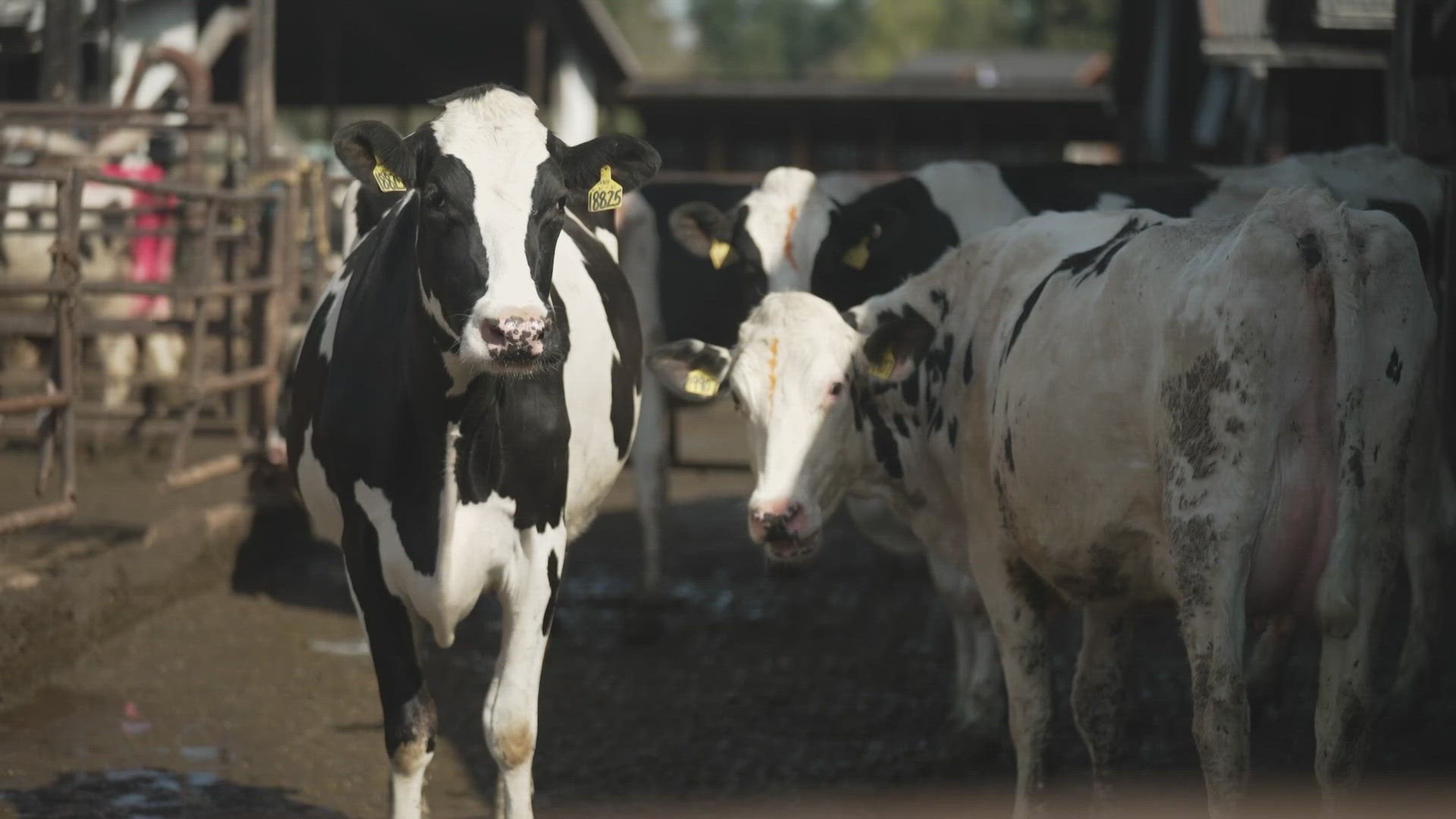ENUMCLAW, Wash. — Schools across the nation are facing a dairy dilemma. Should whole milk be re-introduced to school lunches?
U.S. Rep. Kim Schrier (D-WA) visited Krainick Dairy in Enumclaw to raise awareness of a proposal to bring whole milk and reduced fat milk options back to school lunches. Schrier sponsored the Whole Milk for Healthy Kids Act, which passed the U.S. House in December 2023, but has not been passed by the U.S. Senate.
The act proposed allowing schools to offer whole milk and 2% milk in addition to nonfat and low-fat options. Currently, districts must offer skim or 1% due to a provision in the Healthy and Hunger-Free Kids Act of 2010, which authorized funding for school meal and nutrition programs. Supporters of making a change believe children would be more likely to drink whole or 2% than nonfat or low-fat based on taste.
"Milk of any fat content is healthier for your children than any of the sweetened drinks," Rep. Schrier said in an interview at the tour, adding that it's an important source of calcium and vitamin D.
Northwest dairy cooperative Darigold has been vocally supporting the change, with Krainick Dairy owner Leann Krainick among those weighing in.
"I've heard from many of my friends with kids that whole milk tastes better," Krainick said. "We definitely want children to get a better taste for milk so they become lifelong milk drinkers."
But some suggest Congress should wait for a scientific panel to review all available current research and for the USDA to make any changes to dietary guidelines, rather than passing a bill on its own.
Sarah Amin is the director of Community Nutrition Education at the University of Rhode Island and researches issues related to pediatric nutrition. She said school breakfast and lunch programs have a huge impact on student learning, and that the 2010 Act was meant to ensure school meals are healthy for students to consume.
The 2010 Act is consistent with its partners, the dietary guidelines for Americans and the American Heart Association, Amin said.
"There has been some interesting research that has come out around some promising studies that indicate dairy fats may not be as harmful as previously thought in regards to cardiovascular disease," Amin said. "But it's important to note this research should not undermine all these tremendous efforts to make sure kids' lunches are as healthy as possible for kiddos."
Several registered dietitians provided insight on what parents should know when choosing between dairy milk options for their children. They were not asked to weigh in on policy-making.
Parents should consider the age of their child, said Erica Lewis, a registered dietitian and program manager at MultiCare's Mary Bridge Children Hospital. Typically around ages 1 to 2, Lewis recommends whole milk. After that, she recommends 1% or 2% milk. She also cautions parents to consider the full range of their child's diet.
"We affiliate whole milk sometimes with heart disease or heart issues or health issues in general, I always like to tell families it's more of the big picture," Lewis said. "We can't blame one food for all of those reasons. ... What does the whole meal look like? What are they eating in general? What foods are they getting exposed to?"
Lewis also said she reminders parents that there are other forms of calcium for kids' diets, such as leafy greens.
Angel Planells, a Seattle-based registered dietitian and spokesperson for the Academy of Nutrition and Dietetics, said families should do what's best for them depending on availability and affordability.
"If we are, I guess I'd use the word, more decadent with our diet, I'd tend to go more for the skim," Planells said. "If we need more nutrition or more calories, we could opt for the whole. It's a personal preference. The dietary guidelines are looking for more reduced or low fat milk."

